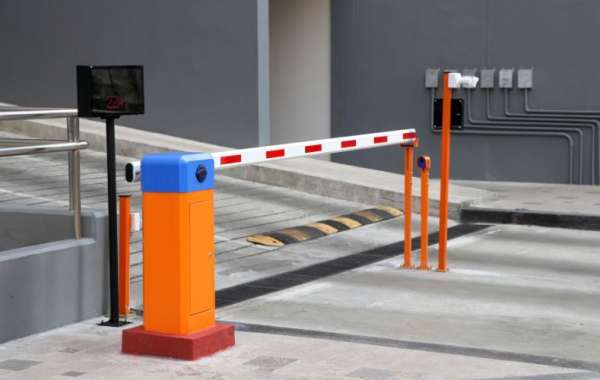The global barrier systems market size stood at a value of above USD 21.27 billion in 2023. The market is further expected to grow at a CAGR of 3.9% in the forecast period of 2024-2032 to attain a value of more than USD 30.03 billion by 2032. Road safety is a critical issue worldwide, with millions of lives lost or affected by road accidents each year. Barrier systems play a crucial role in preventing accidents and saving lives by providing a physical barrier between vehicles and hazards. In this article, we will discuss the various types of barrier systems used in road safety and their effectiveness in preventing accidents and saving lives.
Types of Barrier Systems
Guardrails
Guardrails are one of the most common types of barrier systems used in road safety. They are typically made of steel and are designed to redirect or contain vehicles in the event of a crash. There are several types of guardrails, including W-beam and cable barriers, each with its own set of advantages and applications. W-beam guardrails are the most common type and are used on highways and roads with moderate to high traffic volumes. Cable barriers are often used in the median of highways to prevent crossover accidents.
Concrete Barriers
Concrete barriers are another common type of barrier system used in road safety. These barriers are made of precast concrete and are designed to provide a physical barrier between traffic lanes. Concrete barriers come in various shapes and sizes, including Jersey barriers and F-shape barriers, and are often used on highways and high-speed roads. Jersey barriers are commonly used to separate lanes of traffic and protect pedestrians and cyclists from vehicles. F-shape barriers are designed to redirect vehicles and absorb impact energy in the event of a crash.
Crash Cushions
Crash cushions are a type of barrier system designed to absorb impact energy and protect motorists from hitting fixed objects, such as bridge piers or toll booths. Crash cushions are typically made of materials that compress upon impact, such as foam or plastic, and are designed to minimize the severity of a crash. Crash cushions are often used in conjunction with other barrier systems, such as guardrails, to provide additional protection for motorists.
Effectiveness of Barrier Systems
Studies have shown that barrier systems can significantly reduce the severity of accidents and save lives. For example, guardrails have been shown to reduce the risk of injury and death in roadside collisions by up to 90%. Concrete barriers have also been shown to be effective in preventing cross-median crashes and reducing the severity of head-on collisions. Crash cushions have been shown to reduce the risk of injury and death in fixed-object crashes by up to 80%.
Maintenance and Installation
Proper maintenance and installation of barrier systems are essential to ensure their effectiveness. Regular inspections and repairs are necessary to identify and address any damage or wear and tear. Installation guidelines should be followed to ensure that barrier systems are installed correctly and meet the necessary safety standards. Improperly installed or maintained barrier systems can fail to provide adequate protection and may even contribute to accidents.
Challenges and Future Developments
Despite their effectiveness, barrier systems face several challenges, including cost and compatibility with other road infrastructure. However, ongoing research and development are focused on improving barrier systems and addressing these challenges. For example, smart barriers with sensor technology are being developed to provide real-time data on traffic conditions and potential hazards. These smart barriers can help improve the effectiveness of barrier systems and enhance overall road safety.
Future Trends and Innovations in Barrier Systems
Looking ahead, the future of barrier systems is filled with exciting developments and innovations. One of the key trends in barrier system design is the integration of technology to enhance their effectiveness. Smart barrier systems equipped with sensors and connectivity capabilities are being developed to provide real-time data on traffic conditions and potential hazards. These smart barriers can automatically adjust their position or alert authorities in case of a crash or other emergency, improving overall road safety.
Another trend is the use of sustainable materials in barrier system construction. As environmental concerns become more prominent, there is a growing demand for barrier systems that are not only effective but also eco-friendly. Manufacturers are exploring the use of recycled materials and sustainable manufacturing processes to reduce the environmental impact of barrier systems.
Challenges and Considerations
Despite their effectiveness, barrier systems face several challenges that need to be addressed. One of the main challenges is ensuring that barrier systems are compatible with other road infrastructure and do not create new hazards. For example, barriers that are too rigid may cause vehicles to bounce back into traffic, increasing the risk of secondary collisions.
Another challenge is the cost of barrier systems, particularly for large-scale projects. Barrier systems can be expensive to install and maintain, especially in areas with challenging terrain or high traffic volumes. Finding cost-effective solutions that provide adequate protection without compromising safety is a key challenge for road authorities and manufacturers.
Advancements in Barrier System Design
Innovations in barrier system design are driving the development of more effective and versatile barriers. One area of advancement is in the materials used for barrier construction. High-performance materials such as high-strength steel, composite materials, and advanced polymers are being used to create barriers that are stronger, lighter, and more durable than ever before. These materials allow for the design of barriers that can withstand higher impact forces and provide better protection for motorists.
Another area of innovation is in barrier system geometry. Traditional barrier systems are often designed with a fixed shape and size, which limits their effectiveness in certain situations. Newer barrier systems are being designed with modular components that can be easily reconfigured to suit different road layouts and conditions. This modular approach allows for greater flexibility in barrier design and installation, leading to more effective protection for motorists.
Integration with Intelligent Transportation Systems (ITS)
Barrier systems are increasingly being integrated with Intelligent Transportation Systems (ITS) to improve their effectiveness. ITS technologies such as sensors, cameras, and communication systems can be used to detect and respond to potential hazards in real-time. For example, sensors embedded in barrier systems can detect vehicles approaching at high speeds and alert drivers to slow down or change lanes. Similarly, cameras can be used to monitor traffic conditions and detect potential dangers, allowing for faster response times and improved safety.
Environmental Considerations
Environmental considerations are also shaping the future of barrier systems. There is a growing demand for barrier systems that not only provide protection but also minimize their impact on the environment. Manufacturers are exploring sustainable materials and manufacturing processes to reduce the carbon footprint of barrier systems. Additionally, there is a focus on designing barrier systems that are easily recyclable at the end of their lifespan, further reducing their environmental impact.




